-
Posts
1,401 -
Joined
-
Last visited
Content Type
Profiles
Forums
Gallery
Events
Posts posted by Matrim
-
-
hanks for the 'wise words' all. I will probable end with the 'thicknessing to size' approach. I may have to reset if I have not left enough meat to do this satisfactorily though. One thing I have jsut realised is that I would be better of cutting all the 'blanks' for the keel, false keel and boxing joint before starting. That way I can have an exact width over all the pieces. My current approach had me cutting keel first (completing joints) then false keel etc etc and I am coming to a belated realisation that this has generated extra work for me as I will have to do some tidying even before the thickenessing is carried out.
I will see how it goes and if I don't like the result reset.
-
Ended up with the pigmented glue again but without the masking tape (it suddenly struck me that the masking tape would prevent the keel from being straight and introduce tiny diagonals). I found as long as I left enough width to thickness the end result then all appeared well.
Here you can see the tidied 'top' of the keel and the not so tidied side. I will be thicknessing the sides to size after the false keel is attached mainly because that will also introduce lots of extra staining.
My rather unexciting approach is to squidge a small amount of glue into a tam jar lid and then use a chisel to add a small amount of pigment (the chisel is easy to clean). It is then mixed in with some scrap wood until it gets a disgusting texture (and fairly repulsive smell all things considered).
This is then smeared onto both sides of the joint before attaching. With glue I find the key points are
- Have a well jointed surfaces
- Secure the joint so it does not move whilst gluing though this does not mean excessive force
- Leave well alone for the entire setting period (in this case 24 hours)
- If surfaces smooth rough them up a bit (for wood less important due to woods structure)
- Don't glue multiples at once. This last stops the first two breaking as adding another piece risks subtly adjusting the initial glued piece and this weakening the joint.
So for this I have used two large clamps to secure a metal straight edge to some scrap but smoothed walnut. This provides two flat surfaces. The keel is then pushed against the ruler and secured with lots of little clamps and then left alone.
The above all appeared to work well and the next step is the false keel. I hit a marginally quandary here as all my helper books seemed to disagree with various things
The Naiad had a depth that matched Steel but used five false keel pieces where Steel states seven
The Euryalus had a depth that matched my plans but also used five keel pieces
The Swan books depth was not relevant as it was a different class and neither was the count for the same reason.
The depth was not a major problem as I always take the plans when Steel or the class Progress book disagree so slightly under 7 inches is what I am looking for plus the Euryalus provides reinforcement that other similar ships also used similar false keel sizes (I wonder if they expected extra leeway in these ships due to the finer hull shape so compensated by a slightly larger false keel). The amount of pieces was more problematic. In the end I decided to follow Steel. Most of the design books state that the False Keel is designed to fall off in pieces to protect the main keel from grounding (and the like). It seems sensible to have more pieces than fewer as otherwise larger sections of the keel could be exposed.
It does not really matter of course but that is in the end what I have decided on.
Joints for the keel were made on the disc sander which coped easily enough with the challenge and I have just started gluing it on using my many little clamps. For this I am ensuring one side is aligned with the keel and the other can poke out. This is because I will be thicknessing the results so need a flat side to keep everything square.
- AnobiumPunctatum, druxey, tadheus and 6 others
-
 9
9
-
Historical fiction can follow well defined ruts driven into the road by other more original authors in much the same way that Tolkein created an entire eco-system of fantasy books that followed. Naval fiction often follows this approach. A common approach is for a 'hero' to be presented with various challenges from both the enemy and his own side which he will naturally overcome. He (and it will be a 'he' in the majority of case) will usually be highly attractive to the opposite sex and in some cases frequently bump into famous 'good' guys who will approve of both him and his actions. They usually have known followers who often function to allow weird bits of ship language to be 'explained'. So in the period we have Sharpe winning every key engagement in the Peninsula, Bolitho, Hornblower, Aubrey and so on. You can usually separate the 'better' (subjective opinion) authors from the worse by the degree in which the author tempers their natural heroism. As an example Hornblower is painfully shy though this does not stop him getting the woman. One of the reasons I like Aubrey so much as he is a character with obvious weaknesses who functions in the world without continuously bumping into fictional representatives of famous naval officers. With Aubrey you get less of the 'hero at sea' and more of a 'hero existing in a well realised world that is a believable representation of what commanding a Kings ship would actually have been like' but it is still a story about a Captain who you realise will always win through in the end.
Anyway that is the common path. Newer authors who want to succeed often follow the same path but introduce quirks to make thing slightly different. Take Julian Stockwin's 'Kydd' - from the lower class (like Sharpe) he is pressganged and starts his books as a landsman who applies himself and rather rapidly gains promotion through the ranks. Beyond that he is a standard clean cut hero character. Similarly we have David Donachie's 'John Pearce' who is very anti-navy when he is pressed and has no interest in the navy at all initially (even trying to establish a mutiny so he can desert one ship). The early books in this series allow a solid tale concerning the lower decks to be drawn especially as 'Heroic Captain' does not appear to be a target on the horizon for the character at that point. The author complements this by a simultaneous 'point of view' from the Captain of the boat 'Ralph Barclay' who does not appear incompetent but is giving very strong hints of being 'bad' including such historical references as being a follower of Rodney and then taking up with Hotham which will send up red flags all over the place to people who know the history of the period. His dislike of Nelson (who pops up frequently to be insulted) is another 'kick the dog scene indicator' (*3) though it does allow an interpretation of Nelson prior to his elevation to actual hero hood to be provided. At the end of the second book our hero (attractive to the ladies who has to have things explained to him in an amusing twist on that plot technique) is a heroic but utterly incompetent Lieutenant due to lack of actual experience in the rank, who is obviously slowly grabbing the odd bit of training to allow him to move forward in the Navy. The books are a cross between Stockwin and Sharpe and the author has succeeded in writing an interesting story that I will certainly continue with.
The book for this specific review takes an utterly different approach to anything that has come before. Firstly (for those who will be unaware) it is set in the British Navy during the Revolutionary to Napoleonic period so beloved of many of the mainstays of this fictional branch but there is no lead character and no hero. The story is told from the 'Alternating Character point of view' (*4) of many (many) characters all over the ship. This surprisingly works well and introduces an element of risk as without a hero we do not know who will survive or even if the ship will itself. The characters are very diverse and the situations that arise cover a wide range of activities on board ship and you actually get what you think is a good idea of what ship life and combat must have been like. The fight at the end is actually quite tense and is very well told especially as you know a lot more of the characters from their earlier POV stuff so deaths seem to matter more. There is also a far finer degree of 'grey' about their characters than 'hero' books can do as a hero is a hero and cannot be a coward or anti-social. I am really looking forward to seeing how the author (the wonderfully named 'Alaric Bond') carries the story forward. Because the POV's told are all over the ship the tale moves forward with the gun deck, lookouts, surgeon, powder boys, command echelon and more each telling their tale and often separately from the other tales so there is no overriding 'hero runs to the gun deck and does so and so before returning to repel boarders' type stream of consciousness. Indeed there are very few books that can cover some of these scenarios at all and often even those can only use one book before the hero advances to a rank which precludes their being there again (examples might include the early Hornblowers when he was a Midshipman or Lieutenant and the same for Kydd's early books or perhaps Aubrey on the Java) so instead you get an almost complete picture of a ship containing diverse personalities working together in a situation you could see happening. The book is definitely not a castle building story (*2).
The book does have a few weaknesses. The first is that at any point people can start explaining what they are thinking or what something (that would have been perfectly obvious to the characters) would occur. This happens frequently especially early on as every bit of sea equipment has someone explaining its use to someone who either knows or needs to know 'I see you looking at this let me explain what it is in exhaustive detail'. The second is that the author is not quite up on recent Napoleonic Naval Historiography and still follows the Victorian line on several subjects. To most readers this will not matter (as it will just reinforce their own Dunning-Kruger inbuilt prejudice's (*1)) but on a couple of occasions I did wince at something I felt was either not true or an exaggeration that would just confirm an incorrect assumption. The two that leap to mind are the ship's crew being provided horse meat to eat whilst in port and secondly that the Marines were an 'elite' organisation with skills that were better than a crack infantry regiment. N.A.M Rodgers has fairly convincingly attacked the Victorian myth of the food being always 'bad' and the marines at this point could not be described as elite. Competent certainly but elite? No.
The entire book works well to show the story of a ship and crew as an entity and does not focus on one individual and for me it works. If you want to try something that is a very different work of fiction on the period then it comes strongly recommended.
Footnotes
- 1 Dunning -Kruger generated research that showed that the less someone knew on a subject the more likely they were to over-rate their ability in or concerning that subject. So someone who has driven professionally might sway they ranked themselves at 60% in driving ability whereas someone who has just passed their test would give themselves '95%' . The follow on from this was that the people often most insistent on the little information they have actually picked up are often the least knowledgeable on the particular subject so the least trustworthy whereas the knowledgeable ones will be covering their work with caveats. In reading since people 'like' what they 'know' they often prefer stories that confirm their own knowledge and are less comfortable with more knowledgeable authors who might present something that challenges their knowledge.
- 2 'Castle Building' is referred to here with regard to C.S.Lewis's interpretation where he differentiated good fiction from 'bad' fiction by the degree to which they allowed the reader to imagine themselves as the hero or lead. As an example he described one sort of castle-builder as
"Egoistic Castle-builder: when reading a story, the reader imagines always himself to be “the hero and everything is seen through his eyes. It is he who makes the witty retorts, captivates the beautiful women, owns the ocean-going yacht, or is acclaimed as the greatest living poet”
As an aside Lewis later relates castle builders dislike of fantasy through this prism which is interesting as at a certain level it also explains some of the disdain for historical fiction as well. Though at several levels the 'Hero' storylines common in the genre certainly could be described as castle-building for those with the imagination to see themselves living in that world/period.
“Though they do not mistake their castle-building for reality, they want to feel that it might be. The woman reader does not believe that all eyes follow her, as they follow the heroine of the book; but she wants to feel that, given more money, and therefore better dresses, jewels, cosmetics, and opportunities, they might. The man does not believe that he is rich and socially successful; but if only he won a sweepstake, if only fortunes could be made without talent, he might become so. He knows the daydream is unrealised; he demands that is should be, in principle, realisable. That is why the slightest hint of the admittedly impossible ruins his pleasure. A story which introduces the marvelous, the fantastic, says to him by implication ‘I am merely a work of art. You must take me as such—must enjoy me for my suggestions, my beauty, my irony, my construction, and so forth. There is no question of anything like this happening to you in the real world.’ After that, reading—his sort of reading—becomes pointless. Unless he can feel ‘This might—who knows?—this might one day happen to me’, the whole purpose for which he reads is frustrated. It is, therefore, an absolute rule: the more completely a man’s reading is a form of egoistic castle-building, the more he will demand a certain superficial realism, and the less he will like the fantastic. He wishes to be deceived, at least momentarily, and nothing can deceive unless it bears a plausible resemblance to reality. Disinterested castle-building may dream of nectar and ambrosia, of fairy break and honey dew; the egoistic sort dreams rather of bacon and eggs or steak” .
- 3 'Kick the dog scene' refers to an author or filmmakers making someone carry out an act of evil for no 'gain' for himself to show who the bad guy is Hitchcock once said
"In the old days villains had moustaches and kicked the dog. Audiences are smarter today. They don't want their villain to be thrown at them with green limelight on his face. They want an ordinary human being with failings."
- 4 'Alternating Character Point of view' - perhaps made most famous by George.R.R.Martin this covers a narrative technique where several characters tell a story from their own point of view without a narrator. Can be first person or 'stream of consciousness'
- uss frolick, jazzchip, mtaylor and 2 others
-
 5
5
-
Voyage to Gallipoli
By Peter Plowman
Dural Delivery Center: Rosenberg Publishing, 20137-1/4” x 9-1/2”, softcover, 304 pagesPhotographs, maps, tables, bibliography, index. $34.95ISBN: 9781922013538Distributed in the United States by International Specialized Book Services, Portland,OregonThe Commonwealth of Australia was born on January 1, 1901. Fourteen yearslater, Australian troops made up a large part of the Allied force that assaulted Gallipoli inTurkey. Australia’s involvement in the subsequent campaign became a defining momentfor the new nation, witnessed today by its most important national holiday: Anzac Day(April 25).Maritime historian Peter Plowman’s book, Voyage to Gallipoli, is a masterlyaccount of the nation’s naval and maritime response to the outbreak of the Great Warand its early operations that culminated with the landings on Gallipoli. The RoyalAustralian Navy was very small: a battlecruiser, three modern light cruisers, threedestroyers, and two submarines were its only up-to-date warships. Australia’s merchantfleet was tiny, too, and its army virtually non-existent. Nevertheless, Australia took onassignments throughout the Pacific in order to counter German forces there, eliminateGerman colonial assets, and assist in terminating effort to raid Allied shipping in thearea.The major task, however, was arranging to transport the new Australian and NewZealand Army Corps (ANZAC) of two divisions (about 40,000 men) to war. The tale ofthis undertaking is the core of Plowman’s book. He relies on a mass of sourcematerial—newspaper articles, letters, memoirs, official documents, and secondarywritings—for his narrative. The use of so many letters, memoirs, and newspaper storiesmakes his presentation particularly compelling and personal without diminishing itshistoricity in the slightest. This is social history at its best.Plowman also displays a masterly use of illustrations to enhance his narrative.His delving into private and public collections to supplement his own material pays off ina fascinating array of photographs, few of which have been published before.Voyage to Gallipoli is both exciting reading and an important contribution to theliterature of World War I. It is particularly interesting for those outside Australia, forwhom much of the story will be new. I highly recommend it.James McFarlandAlbuquerque, New Mexico
-
HMS Pickle: The Swiftest Ship in Nelson’s Fleet at Trafalgar
By Peter Hore
Annapolis: Naval Institute Press, 20155-1/4” x 8”, hardcover, 192 pagesIllustrations, bibliography, index. $34.95ISBN: 978-0750964357HMS Pickle was the second-smallest British warship at Trafalgar. Pierced for 14guns, this schooner was part of the anonymous swarm of small vessels populating theRoyal Navy during the Napoleonic Wars. Except for HMS Pickle being picked to carrythe post-battle dispatches (and news of Nelson’s death), it would be completelyforgotten today.HMS Pickle: The Swiftest Ship in Nelson’s Trafalgar Fleet at Trafalgar,” by PeterHore, tells the history of the ship and its various crews. It is a slim but interesting volumeabout a minor but significant vessel.Hore actually tells the story about the first two Royal Navy warships namedPickle. In the first decade of the nineteenth century the Royal Navy briefly had two shipssimultaneously named Pickle. Both were schooners, both came from the West Indies,and both were active at the same time. Hore unsnarls the resulting confusion by relatingthe history of both ships.The focus is on the Trafalgar Pickle. A fascinating story it proves. This Pickle waslaunched in 1799 under the name Sting. Built in Bermuda it was a schooner, with foreand-aft sails on both masts. Schooners are common sailing vessels today, but theRoyal Navy then considered them experimental. Hore describes how the ship waspurchased in the West Indies station in 1800, renamed Pickle and used to carrydispatches.Hore not only describes the ship’s history, but also describes those whoimpinged on the ship. The list includes the woman who would become Lady Hamilton(well before that date), Lord Hugh Seymore (who could potentially have rivaled Nelsonhad he not died of Yellow Jack), and Michael Fitton (whose exploits were retold infictional form by Showell Styles).Beyond the prominent and eccentric, Hore also relates the lives of the men andofficers who served on Pickle. Hore gives a face to the typical mariners who mannedthe Royal Navy of the period, both before the mast as sailors and on the quarterdeck asofficers.Herein lies the fascination. Pickle’s moment of glory came after Trafalgar, when itcarried Admiral Collingwood’s report of the battle to the Admiralty. Its captain was a 35-year-old lieutenant, capable, but previously luckless. He made the most of hisopportunity, racing other ships, and avoiding superior officers to be the first with thenews. Hore describes the consequences of both success and failure in the race.Yet the majority of his career and Pickle’s career fell outside that brief moment offame. Hore describes that as well, both the tedium and the danger. The book is less astory about Trafalgar than of life on the little vessels in the Royal Navy during the age offighting sail.Mark LardasLeague City, Texas -
War in the Chesapeake: The British Campaigns to Control the Bay, 1813-14
By Charles Patrick Neimeyer
Annapolis: Naval Institute Press, 20156-1/4” x 9-1/4”, hardcover, x + 244 pagesIllustrations, maps, notes, bibliography, index. $44.95ISBN: 9781612518657Charles P. Neimeyer, Director of Marines Corps History and Gray ResearchCenter at Marines Corps University, has researched and written one of the fineststudies available of British campaigns in the Chesapeake Bay during the War of 1812.His synthesis of numerous primary and secondary sources provides the vehicle for anexcellent narrative that addresses the prelude to war, the stalemate on the northernfrontier, and unsettled conditions around the Bay (popular unrest, a scramble for thespoils of privateering, and weakly prepared military defenses) before plunging into thenitty-gritty details of the British campaigns of 1813 and 1814. Within these campaignshide marvelous stories of vessels large and small, heroic individuals, valiant resistance,lives sliced short, and a seemingly unstoppable juggernaut that faded in the light of adawn breaking on the waters and fields of Baltimore.Neimeyer focuses his efforts on several key areas: the defense of Craney Islandand Norfolk, British raids ashore in 1813, American naval resistance around the Bay,and the assaults on Washington, Alexandria, and Baltimore in 1814. His treatment ofthe British handling of American slaves is interesting; and the author does not neglectactions outside the Bay (for example, Cockburn’s raid on the Outer Banks of NorthCarolina). In several instances, he illustrates the interconnectivity of the Chesapeakecampaigns with other events of the war. Notably, Neimeyer ties the cruelties (by bothsides) along the Canadian Frontier to the burning of civilian homes and governmentbuildings in the Chesapeake region. War invariably grows crueler over time–the War of1812 was no exception.As with all works, there is room for improvement. More maps would be welcome.Some additional analysis of the place of prize money and the drive for promotion amongthe Royal Navy’s officer corps (especially with the war in Europe winding to an end)would not be amiss. Similarly, the effects on the war as a whole of these massiveconcentrations of available British resources could have used a few more words.That noted, this is an extraordinary study that combines readability,entertainment, and the scholarly touch. It is a history for the general reader as well asthe professional historian. As the 200th Anniversary of the War of 1812 cruises to itsinevitable close, Neimeyer’s study of the Chesapeake Campaigns is highlyrecommended and deserves a spot on your bookshelf.Wade G. DudleyEast Carolina University- phebe, mtaylor, thibaultron and 1 other
-
 4
4
-
Clipper Ships and the Golden Age of Sail: Races and Rivalries on the NineteenthCentury High Seas
By Sam Jefferson
8-3/4” x 11-1/4”, hardcover, ix + 230 pagesIllustrations, maps, diagrams, index. $45.00ISBN: 9781472900289The title and the last two paragraphs of Chapter One advise that this bookfocuses on captains and is a selection of true fo’c’sle stories. The stories are illustratedwith a remarkable collection of old and new art and photographs which depict theclipper ship era magnificently reproduced in color, and dominate the book. Theproduction and manufacture of the book is to a very high standard.The author, who concentrated solely on the prose and pictures, left the bookdevoid of any technical detail regarding the development, design, and construction ofclipper ships; with the only exception being a brief outline in the first chapter. Rainbowwas born from more radical Baltimore clipper designs, with no mention of e Ann McKim;the topsail and the topgallant are depicted as whole and then split; and the shipsprogress from wood to composite to iron, with no explanation within the book for thesedevelopments. The book focuses on the tales of the times and the art depicting the era.Not enough technical detail could be included to satisfy the typical Journal readerwithout detracting from the real focus of the book.The readers are the beneficiaries of a professional writer’s passions for the seaand clipper ships. Jefferson’s Clipper Ships is excellent story telling. The sea, ships, andcrew are hard task masters, but for the right personalities, glory is to be found.However, with the loss of vigilance and the accession of untempered arrogance, failure,disaster, and death await. Concentrating on the lives of clipper captains, the authorprovides several of their biographies, some of whom are doomed to ultimate failurewhile others gracefully leave the sea or remain upon it. The book includes some of thevoyages of all of the great clippers of America and Britain which begin with thenecessity for speed to reach California through the domination of speed from China toLondon during the tea races in the 1860s.Jefferson really hits his stride in the telling of the Great China Tea Race of 1866(Chapter Six) and the incredible passage of Sir Lancelot in 1869 (Chapter Seven). Hesucceeds in placing one on the deck of a great ship and wonderfully conveys theexcitement and the anxiety of an event. For a writer of non-fiction, always a neat trick.The value of this book to a ship modeler or a researcher is that it allows one toimmerse oneself in the lore of the clipper ship era. The book provides sufficientlydetailed art credits to allow further research into the selection of a clipper beforeselecting a model to build. Do not limit yourself to Cutty Sark or Flying Cloud. A mostbeautiful book and an easy, short, enjoyable read.Phillip A. RoachNaples, Florida -
World War II U.S. Navy Vessels in Private Hands
By Greg H. Williams
Jefferson, North Carolina: McFarland & Co., 20137” x 10”, softcover, 358 pagesIllustrations, glossary, index. $55.00ISBN: 9780786466450This is not a book that you will read by the fireside one dark and stormy night,seeking excitement and nautical entertainment. Rather, what you will find within thepaper covers is an exhaustive list of United States Navy ships and boats in private (nongovernment)hands. As such, this is an encyclopedic reference that you’ll keep on theshelf for reference whenever you need information on a particular vessel.The author served four years in the U.S. Navy, several of them at sea, and wasone of twenty-seven volunteers who sailed the Liberty ship SS Jeremiah O’Brien fromSan Francisco to Europe for the fiftieth anniversary of the D-Day Normandy Invasion.He thus brings the requisite interest and background to this important work.The list of vessels run from minesweepers, coastal transports, ocean-going tugs,the many and varied types of landing craft and ships, vessels with names, vessels withonly numbers, PT boats, submarine chasers, and many others. Each vessel has a“biography” that includes the builder, date of build, date of commission, the variousregistered owners, the current location if known, and the Official Number specific toeach vessel.The book is printed on average quality stock, has a soft cover, and contains onlytwo photographs, both black & white: one on the cover and one on the frontispiece.The price seems high, but it appears you are paying for the author’s extensiveresearch rather than the quality of the book. If this is the type of reference you’ve beenwaiting for, then it comes recommended.Robert N. SteinbrunnStillwater, Minnesota -
The Ships of Howaldt and HDM, Volume 1: New and Converted Vessels Built by Kieler
Howaldtswerke AG between 1945 and 1967By Hans H. Meyer
Bremerhaven: Oceanum Verlag, 20138-1/2” x 10-1/2”, hardcover, 446 pagesPhotographs, diagrams, maps, tables, bibliography, index of ships. €49.90ISBN: 9783869270715Howaldtswerke in Kiel is one of the oldest German shipyards building iron andsteel vessels; its first commercial ship was constructed in 1865 although the companyhad operated from 1838 as a manufacturer of steam engines and boilers. It also has thedistinction of having built the first German submarine (Brandtaucher) in 1850, and is stillin this business today.This first volume devoted to Howaldt ships covers the company’s “golden” post-World War II years, when it was among the most productive of German shipbuildingenterprises. Between the end of the war and 1967 (when the company merged withDeutsche Werft AG of Hamburg) the Kiel yard built almost 300 new ships and undertookaround 100 more major conversion projects. Meyer’s book details them all.The first part of the book, which covers the history of the yard during this period,is presented in both German and English. The rest of the book is in German exclusively,but, thanks to extensive use of tabulation (for which there are translations into English ofheadings and technical terminology), most readers with minimal knowledge of thelanguage should be able to understand much of the information presented.Meyer presents a potted biography of every ship built or converted during thisperiod—the use of tabular data, in fact, makes these very comprehensive. Most of thebiographies also benefit from photographic coverage. These ship descriptions arearranged by date order, but there is a comprehensive index of ship names, whichenables one to quickly locate any particular vessel’s biography.During this period, Howaldtswerke delivered some quite notable vessels. Amongthe early conversions were several for the whaling industry, both factory ships (fromtankers) and catchers (from surplus British corvettes—themselves built to a designderived from a pre-war whale catcher). Possibly the most famous of its conversions wasAristotle Onassis’s yacht Christina, which started life as a Canadian River class frigate.Significant new construction types included a large series of tankers, many for Onassis,and the first new U-boats for the Federal German Navy.The final section of the book presents a large number of 1:1250 scale side views(all drawn by the author) of many of the yard’s products, both new builds andconversions. These are organized by type, and also are accessible via the index of shipnames.This first volume of The Ships of Howaldt and HDM is an absolute trove ofinformation for researchers and shipping enthusiasts, covering an important period inthe history of one of the most significant German shipyards. It is highly recommended.Paul E. FontenoyNorth Carolina Maritime Museum -
Bibliographie zur Gesicht der Navigation in deutscher Sprache
By Wolfgang Köberer
Bremerhaven: Oceanum Verlag, 20118-1/4” x 10-3/4”, hardcover, xii + 297 pagesIllustrations, bibliography. €49.90ISBN: 9783869270074Bibliographie zur Gesicht der Navigation in deutscher Sprache is a very valuabletool for any researcher into the art of navigation, both historically and at present. Thefact that it documents only German sources does not diminish its value because itscoverage is so wide.The study divides itself into two sections. The first is a detailed bibliography ofbooks on navigation published in German up to 1800. There are about twenty-five suchworks (plus several that appear in multiple editions). The most intriguing fact thatemerges from this list is that most of the books were of Dutch origin, a further testamentto the vast influence of the Netherlands on shipping in the period.The second section documents secondary sources published in German thatdiscuss the whole gamut of navigation and its history in the broadest possible sense.The bibliography encompasses both books and articles published from the latenineteenth century to recent years. It is organized topically, so there are descriptions ofmaterial covering the western tradition of navigation, practices in other parts of theworld, charts, and navigational instruments. In all there are close to 3,400 citations.Köberer’s Bibliographie zur Gesicht der Navigation in deutscher Sprache is farfrom being the most exciting of reading. Nevertheless, it will be very useful, even to non-German speakers, because of the breadth of its coverage and the detail it provides foraccessing the sources.Harold G. UnwinChicago, Illinois -
The Vinyard Shipbuilding Company: Delaware’s Only Surviving Historic Shipyard
By Joan W. Lofland
Milford, Delaware: The Author, 2015
12-1/2” x 9-1/2”, hardcover, ix + 198 pages
Photographs, maps, sources. $45.00
The Vinyard Shipbuilding Company is a remarkable survivor. The restored yard
still contains the original boat shed, machine shop, woodworking building, sail loft, andrailways from the 1920s, and its present owners have preserved and restored threemotor yachts built there, including both the first of the type (Augusta, built in 1927) andthe last (Vignette, built in 1951).There is a considerable body of academic work relating the story of the yard.This book, by one of its current owners, is primarily a photographic story of the yard,illustrating its history from 1896 to the present. The sheer quantity of images she hasmanaged to assemble is astonishing, and we also can be grateful that the quality ofreproduction is commensurate.During the yards earlier years, its products were what one might expect for asmall operation: ferries, tugboats, small traders, and military light craft (submarinechasers and Coast Guard patrol boats). From the late 1920s the business’s primaryproducts were recreational watercraft (and more sub chasers during World War II). Allreceive due attention, though there is a notable preponderance of yacht images,probably because such craft attracted more contemporary attention.For detailed examination of the yard’s history, readers should turn to the variousmore academic studies. Anyone interested in the beautiful motor yachts of the 1920-1950 era will find this book a delight.David McCannDover, Delaware -
Thanks Mark, I had a brief check of the test joints this morning and the 'glue with paint' was not impressive, the 'pigment with glue unprotected' was a mess and required a lot of sanding mainly because the glue and pigment had soaked into the wood (or the grain at least). The 'pigment with glue and masking taps' was not bad at all though. The glue had partially spread under the masking tape but not outside of the masking tape so though that also required sanding because it was concentrated in one area it was 'proud' of the wood and therefore required less sanding to control. Using 'frog tape' might be a better approach as would perhaps sealing the exterior wood with the tape half an hour prior to applying the glue.
I will sand to cleanliness tonight and then see how much thickness I needed to remove. if it is still at the correct dimensions then I may go with that. If smaller I will probably redo with larger sized base pieces.
-
And wait and wait while glacial progress occurs.
Speaking of glacial progress it is probably about time for an update with dodgy photos.
I have started on the keel initially by trying out two woods for ease of use and appearance – European Pear and American Cherry. The Pear was easier to ‘work’ but the Cherry looked nicer so the Cherry ‘won’. Once this was decided I then produced lots of blanks to do some practice joints.
When happy with an approximate joint methodology I created yet more 6 inch blanks by cutting on the table saw and then thicknessing to around 0.75 mm larger than required before testing them for straightness.
For the joint I decided to go for the more traditional diagonal scarph and took the following approach.
First up I marked the joint angle on the initial piece and cut it out. I then used this to mark the wood to remove on the next piece.
(Obviously not at the indication above which would be a minuscule keel section..)
I then cut out the shoulder with two to three scroll saw cuts to get a slightly larger ‘gap’
Then the joint was worked down on my lovely Byrnes disk sander (which had come miraculously to life after I used the highly unscientific approach of pulling grumpily all the wires attached to the capacitor in a successful way to stop it behaving like an arthritic hamster after two years in the loft) almost to the line.
This was then matches to the previous piece to ensure the ‘angle’ was correct. I could then stop or adjust further on the sander.
If unhappy then I could use the extra length in the 6 inch blanks to shift the joint slightly and start again.
If happy then I would use a chisel to flatten the area around the shoulder usually by following the flat section of the joint first.
Then finally the joint was tested against a flat surface with my table saw base being the obvious star here.
So I now have a ‘1st team’ of keel pieces that still might get relegated to ‘2nd team practice squad’ dependant on the results of my next (and current) task.
I have just attempted three practice joints using
A - Black pigment in glue
B – Black pigment in glue but with the exterior wood protected (hohoho) by masking tape
C – Black paint in glueI don’t particularly want to forstall the obvious excitement in awaiting the results but it does look to me that the ‘squelch’ from the joints has still managed to stain the surrounding wood. My sterling efforts to wipe it clean just appeared to spread the stain over a wider area.
Anyway I do still want to see what joint strength is like and then how much mess remains and how easy it is to remove. If it is hard to remove then I may either re-start with thicker blanks better able to withstand the tidy up operation or perhaps try dark paper.
So my final question is any advice on the best paper type to try and or tips on coloured glue usage which keeps the other wood clean(er)..
Thanks for reading.
-
It has taken several years!... but I am finally ready to start on my first major scratch build project. For those who have forgotten this will be a 1:64 scale model of HBM Amphion a 36 gun English frigate from the Napoleonic Wars.
Plans and general research has existed up to this point in this topic here
http://modelshipworld.com/index.php/topic/259-hbms-amphion-1798-32-gun-18pdr-frigate/
Which I thought I would leave in place as opposed to copying over. Any historical gumpf can then go there allowing this to be more build orientated.
Before starting this project I have decided to set myself some ground rules (following the eminently copyable example of Ed from whose book much of the the following list is 'adjusted')
- Measure twice then cut once - often easier said than done for me this will usually mean thinking closely about what I am trying to do before doing it.
- Use the correct tool for the job - Thankfully I have built up a wide range of tools that should make this easier.
- Keep tools sharp including marking pencils - My habit of grabbing any old pencil must be resisted
- Clean up immediately - Ed refers to glue and if a modeller of his standard needs to react to glue then I shall have extra work on my hands
- Dry fit pieces first - seems logical.
- Don't use test pieces as actual pieces. As an addition to this to actually make test pieces as oppose to using the test piece as the completed erm piece.
- Mark and indent hole locations before drilling - use templates to reduce hole 'movement' as the eye can often lie
- When fatigue sets in then stop work - Resist the temptation to 'get something done' - it can always wait especially if something else has just been successfully completed. I tend to rush and put myself under time pressure which then lowers quality.
- Step away from the model if stressed - If I get to a difficult section then don't run myself into the ground but do something else for a few days and then return in a calmer frame of mind
- Keep quality consistent - If a piece is not good enough then start again. I am no zealot as far as accuracy (or have not been in the past) this model is requiring a considerably larger portion of my life so I want to increase my standards of operation.
- Reference other modellers when trouble beckons - this might seem a misnomer to most modellers but historically I have preferred to work stuff out myself rather than use MSW or other sites/books to research. AS with the previous point this model deserves better so if something fails to work at first try check the many excellent resources out there. In reality this will usually be ModelShipWorld forums and the recent spate of excellent books including Ed's HMS Naiad, David Antscherl's Swan Class Series and Allan Yedlinsky's HMS Euryalus
That will do for a start. I expect fairly heavy re-work to occur - especially on the plans but we shall cross those bridges when we come to them.
This initial post shall be a somewhat boring one as I have only just completed my building board. For this I decided to copy the Swan Class building board (adjusted to my larger ships size) which has the virtue of being the simplest. I used thick melanin board with beech (I think , it was marked beech but who knows..) runners. My initial attempt to draw the center line was horrifically not crowned with success as though straight it was not level to the sides so I redid it and now have an amusing double fanning line at one end so have to make certain I don't utilise the wrong one.
Next up I had to place my 'fish' plan on it. After some hassles working out how to get turbo cad to print to size and not adjust the size (I added several L shaped lines to the plans with each line measuring exactly 64 inches thus if scales properly in the printer they should be exactly 1 inch when printed. This was very useful) . For attaching the plans I initially followed the 'Swan' advice to use artists spray (it not being water based) but this was not an unalloyed success possibly because my paper was too thin and it looked rather blotchy plus having had reinforced the center line with red ink several blood like blotches also appeared. Now I fully expect the build to draw blood at some point but can do without bad omens before I have started.
After reflecting a bit I decided to take a different approach. I re-printed the plans and re-checked the scale before laminating them (and re-checking the scale post lamination). I then sliced the ends of with a hard edge and a scalpel and glued that to the board with standard glue. The lamination is sturdy enough to resist any depredations from the glue and it has the further advantage of being a cleanable surface. The only thing I will have to be aware of going forward is to ensure that any vertical measurements need to take into account the extra thickness whether on or off the lamination.
Next job is to decide which wood to use for the keel and innards. I have some samples which I plan on practicing the keel joints with and will decide on appearance and ease of use once I have practiced. Past experience tells me it may now be months before I am happy with the result so don't expect particularly quick updates...
- uss frolick, archjofo, harvey1847 and 14 others
-
 17
17
-
K done and dusted. A nice fun little kit when all is said and done. I am also pleased I have got back into 'making' stuff and feel as if I steadily improved as I went along.
I sometimes wonder if a more steady researchy approach would suit better and I may adjust to that for the scratch. As it stands I like to see if I can work it out myself first which often hurts 'quality' in the end. Equally that's not the way I am currently wired and it is satisfying working out how to improve a technique myself.
Thanks to Chuck for the design and thanks to everyone else for any encouragement along the way.
Look another 'soft focus in the dark' shot
 l tell myself this is how non-ship modellers see these models anyway..
l tell myself this is how non-ship modellers see these models anyway..- GrandpaPhil, GLakie, Jack12477 and 6 others
-
 9
9
-
-
The joys of bad lighting.
Anyway whilst rigging I have slowly improved some of my techniques but not solved all the problems I want to (one of the reasons I am considering another kit as opposed to divinng into my scratch next).
As an example I have always found knots in rigging problematic. I normally use a double basic knot which tends to be to easy to come undone so then reinforce with superglue. I don't like it as superglue makes the rope do weird things and the knot tends to be outsized for the scale worked at.
So my current new 'rules' are to use hitches or constrictor knots (if I have space to tie them) and when applying super glue only ever apply them once the rope is under tension as that avoids weird bends in what should otherwise be free flowing rope. When applying super glue I put a drop on a scrap bit of wood then use a smaller stick of wood to apply a tiny amount to lock the knot. That way I avoid the heinous sin of squeezing a super glue container on the model directly. This can cause bad things to happen....
Anyway this is all very well but in some cases waiting for the rope to be tensioned can cause problems if blocks are seized on section mainly as should the seizing manage to move slightly then the block can fall out causing the attempt to reset the block to cause you to accidentally knock the rudder out (ahem). Anyway to avoid this I now used the unchallenging method of gluing the seizing the night before but ensuring that the rope is tensioned with tweezers
This seems to be working far better for me.
Next step is to practice those hitches to reduce the common knot size. It would be really nice to avoid super glue altogether but that would almost be a follow on technique from being able to tidy the loose end somehow. Something I have not worked out yet either...
-
-
Tying blocks and rigging seems to be yet another art. I am finding that a combination of constrictor knots, seizing and only applying very,very small amounts of super glue after the knot/rope has taken the strain on the model is working better. Naturally this was only learnt after not doing any of that on earlier ropes/knots/blocks but live and learn.
I quite like rigging though it is therapeutic....
-
-
Aha I see the problem I read that as 'seize the shroud [what width is this] with [A] 0.21 black rope as opposed to seize a 0.21 black rope shroud around the masthead.
Just the way my head works I suppose as that looked like you were describing the seizing rope size and not the shroud.
Thanks for clearing up my mistake though

-
-
-
Time for some more historical gumph. Now I have been (very slowly) adding the musters to excel whilst writing out the logs into onenote so I can attempt to look for points of interest in either. There are a lot of caveats with this process. Beyond the frankly atrocious handwriting data is also frequently missed. As an example I am up to Christmas 1798 now and am still backfilling 'Country of Origin' on some of the crew who joined when the ship was first commissioned. The second problem is one of general depth. Some of the statistics I can see may be more or less important than I recognise but without wider knowledge of what is common it is often difficult to work out if something worthy of note has actually occurred…Finally a lot of the location guesses are exactly that as there is no guarantee someone from 'Dublin' was Irish or regarded themselves as Irish. The final main point is that until the 'closing figures' at the end of the commission are found these numbers may change and switch.
So for this post I am going to number crunch and then bring up some possibly interesting factoids found.
May 1798-September 1798 Muster (number crunch)
Crew Numbers
Officers 10 (Captain, 3 lieutenants, 6 midshipman)
Warrant officers 9
Able Seamen = 67 (28% of the crew so a reasonable proportion?)
These came mainly from a turnover from the Egmont along with 9 pressed in (at?) Zealand. Of the pressed 2 deserted (7.462% of the able seaman deserted) prior to November. 6 more were volunteers and all of these were promoted fast (to Captains Clerk, 2 to Ships Corporal, 1 to quarter gunner, 1 to quarter master, 1 to master at arms (the impressively named Oncelephours Tyndall)
Of these expert crew at least 11 appear Irish (16% of the total) and 1 welsh
Ordinary Seamen = 51 (21% of the crew with 13% of these deserting before November)
46 were pressed from (at) Zealand with 1 further pressed who managed to pay for a substitute. 1 of these was incorrectly pressed and managed to get discharged by admiralty order and 7 deserted before November
2 more were volunteers (with 1 of these deserting) and the rest came from the Royal William
Landsman = 70 (30% of crew with 14% deserting)
17 were Pressed from (at) Zealand with three managing to get discharged by Admiralty Order
26 were volunteers from (at) Zealand - which basically means they were pressed but said they 'volunteered' as at least they gained the Kings Bounty
11 more came from Dortecht
Followed by a mix for the rest
7 were Irish (10% of total)
2 Scottish and 2 welsh
2 European (Ostend and Portugal)
2 further afield (1 American and probably an ex-slave named 'Cotton Brown' which was a common slave name the other has a location of Perth which 'might' be Australia or could actually be somewhere else.
There were 26 ships boys (11% of total with 15% of these deserting before November)
5 were 1st Class
10 were second class with 5 of these 'poor orphans' from the Marine Society with 2 of these deserting
4 were from other ships with 2 of these deserting
33 Marines including a 2nd Lt, Sgt, Cpl, drummer
And 8 Dutch prisoners received from the Proserpine (ex Ethalion) in August.
There were also a lot of supernumeraries but with the ship fitting it is expected that it would be heaving with other Naval staff.
People and points of interest
People
The officers have some 'history' I have tracked down. The 1st Lieutenant - Thomas Delafons ended up as a well regarded shipping officer for the Duke of Wellington at the end of the Peninsular War and the 2nd Lieutenant William Bennett had his nephew as a Midshipman on the ship (Thomas Bennett). I have not made any family connection to the Captain but it may exist.
The 3rd Lieutenant (Edward Elliot) is interesting as he was commissioned on the 25th May and was superseded on the 10th July onto half pay. I have not managed to find out why yet - he might have irritated the Captain or might not have liked the Captain or had a personal reason.
Of the Warrants the Master (Thomas Anstay) has a lot of information behind him and looks like a young 'thruster' as this was his first frigate appointment.
Punishments
Here is an area where I would definitely like more comparison to other ships though I eventually will be able to compare to other Captains on this ship. In the period covered 50 lashes were given
19th July - 18 lashes for deserting
6th August 2 sets of 12 lashes for neglect of duty17th August 18 lashes for drunkeness
Apart from that we have an interesting situation on the 27th July when an Able Seaman was 'confined' for striking William Hodge (one of the Midshipman). It is interesting because it is one of the more experienced crewmen and you would expect lashes for such an offence so it would be interesting to know the circumstances.
On the 2nd August the ship suffered its first death when 'Johnson Dennis' and Ordinary Seaman died. At midnight on the 1st August he had fallen from the Foremast and his injuries had been severe enough to kill him.
On the 23rd August the Marine Corporal 'William Emery' was demoted to Private for no given reason.
Desertions
These follow a definite pattern with most of the desertions occurring just before the ship was due to sail. 9 occurred in July and a more worrying 16 in October. Interestingly there appears a possible correlation between the 19th July 18 lashes for 'deserting' and the disappearance on the day before of the majority of the 9 July desertions. This person was a marine and it looks like he was used as an example or perhaps turned a blind eye to the desertions.



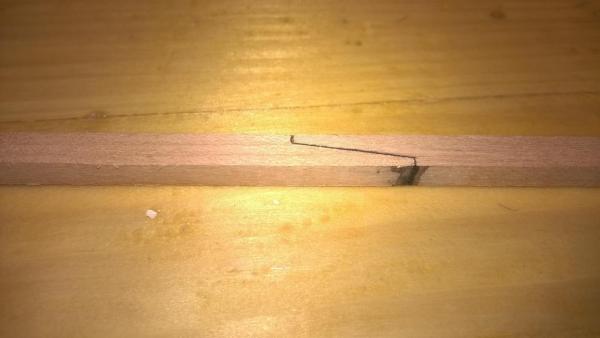
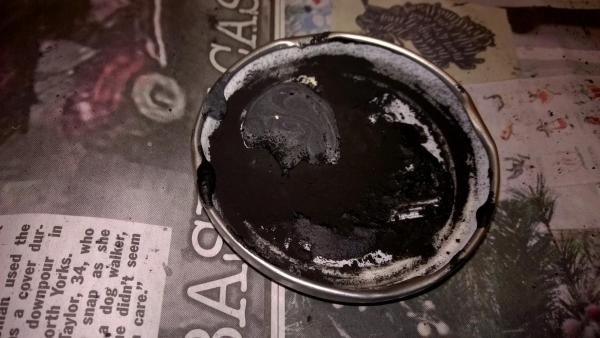
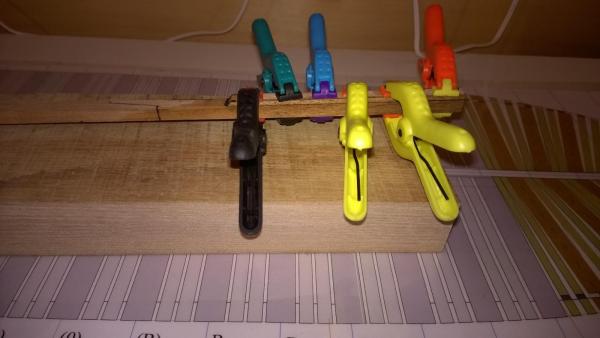
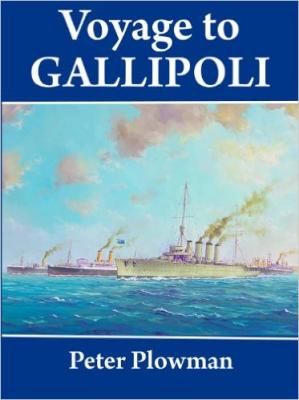
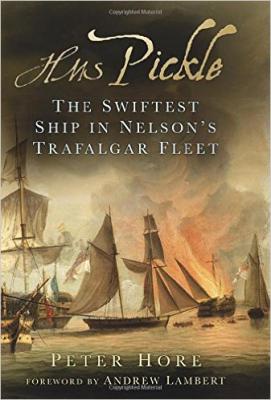
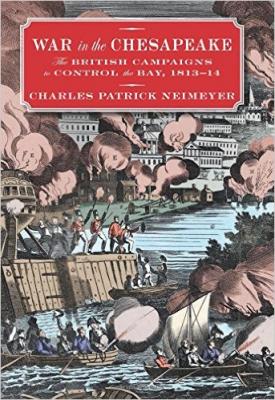
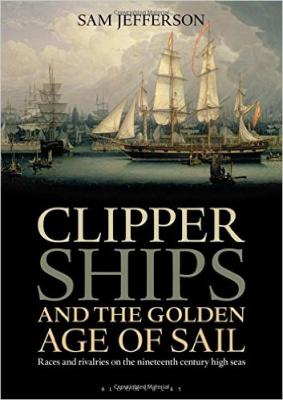
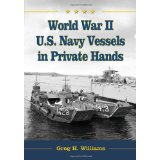
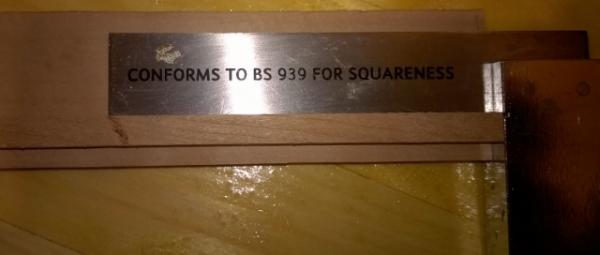
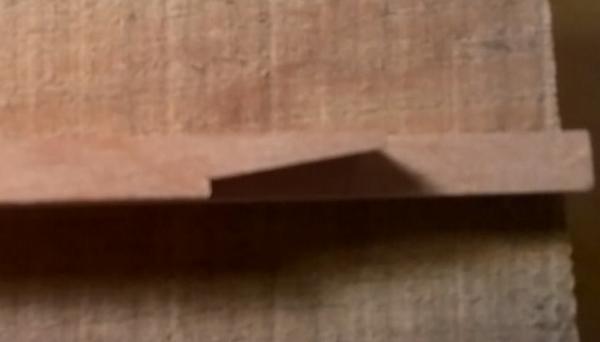
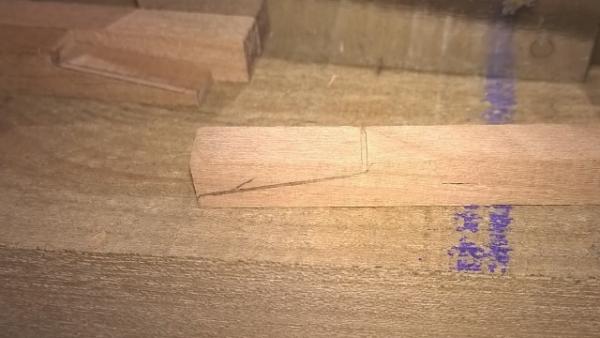
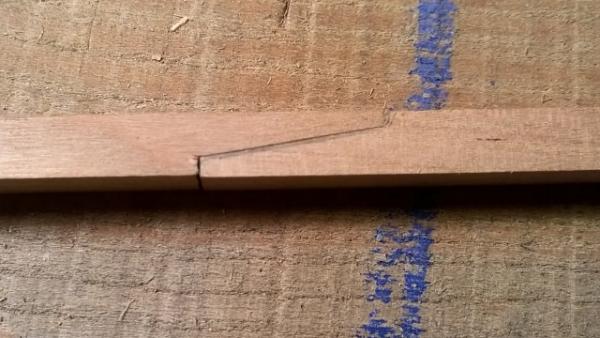
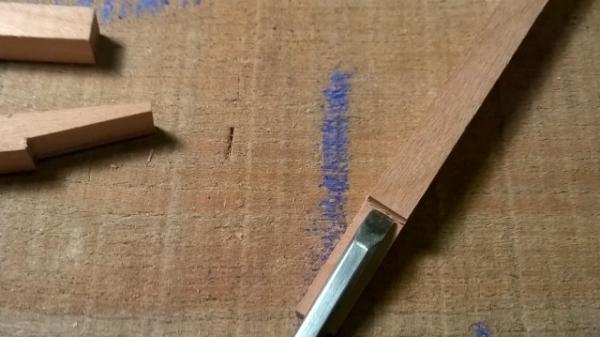
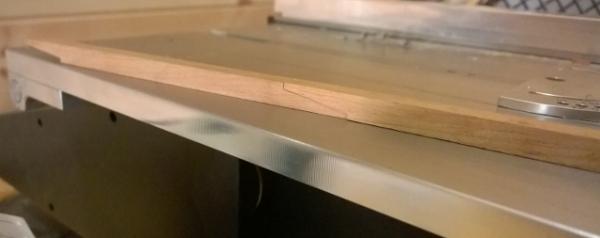
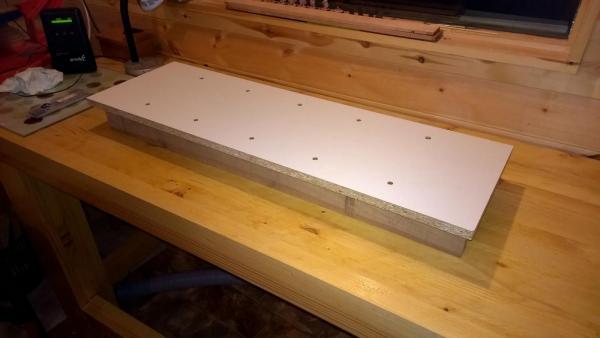
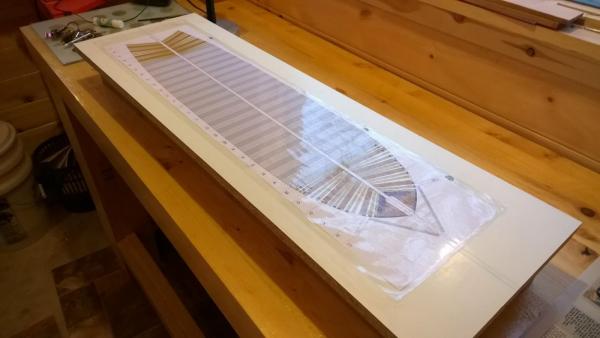
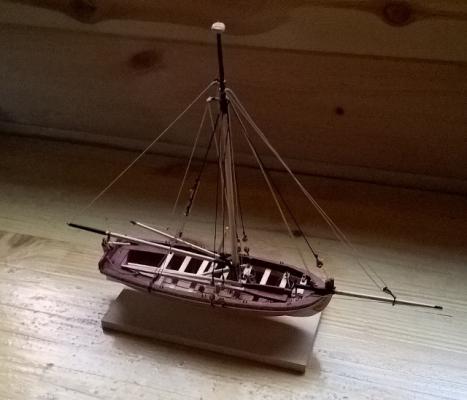
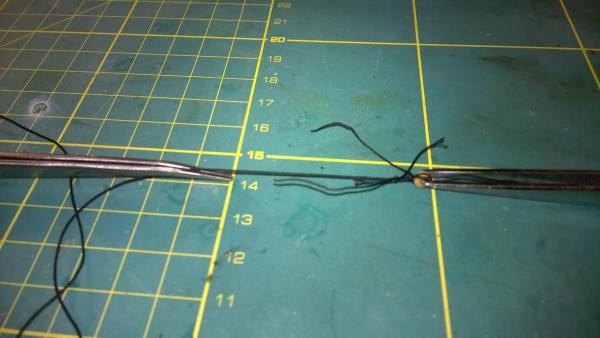
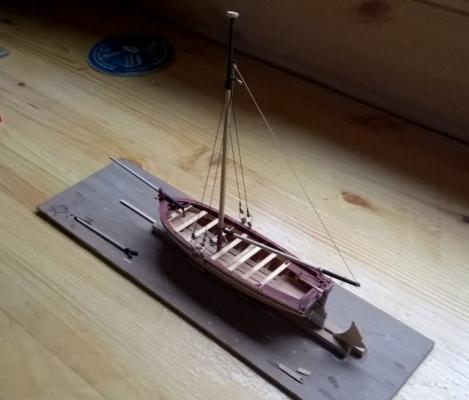
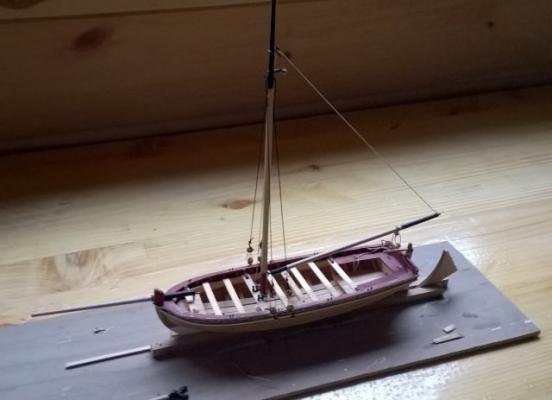
HBMS Amphion 1798 by Matrim - 32 Gun 18pdr Frigate
in - Build logs for subjects built 1751 - 1800
Posted
Time for another quick update. I have been working on the boxing joint and after several rather abortive attempts finally found a process a 'liked' that produced a piece I 'liked'. Some people have the talent (or practiced enough) to produce beautiful joints using just hand tools. This is not me. Instead I have to use various power tools mainly for their unbeleiveable ability to keep things at 90 degrees to each other.
Anyway for what it is worth here is the procedure I eventually followed (some of the photos are actually of earlier pieces)
1 -First up I started with a larger blank than normal to give plenty of 'fat' and then re-cut the long end and the short end on the table saw. I then marked those sides so I knew which were 'true'.
2 - Next I pasted the paper onto the true edge making certain I left plenty of space at both ends.
3 -The next cut was a parrallel cut for the upper side of the keel piece using the table saw. I found this easier earlier when I had more meat to work with. As the piece gets thinner the table saw gets a lot more fiddly and dangerous to use.. Also keep well away from the actual end of the straight line.
4 - Next up I cut the majority of the upper curve on the scroll allowing an upper section to be removed
5 - I then cut the forward diagonal edge with the scroll saw but not across the entire length of wood. I initially did this step after milling but found it far more difficult to get the angle at the correct angle and position. Here I used a blank to cut the angle then compared that to the pattern before putting the keel piece itself to the saw.
6 - Now it is safe to mill. Initially I cut to a test depth and on some spare wood (on the keel piece) so I could check the measurements.
7 - Allowing the depth is correct milling with an end mill can now be carried out. This has the superlative advantage of keeping the cut face at right angles. The piece is also easily secured on the 'dead' ends allowing safety without marking the wood of the piece itself.
The end result was left relatively rough
(Note the above was a test piece before I cut the diagonal joint - from this you can see how difficult it would be getting that cut in the correct location)
8 - Now the forward vertical cut can be made with the table saw and then the rear vertical cut making the piece about the correct size.
9 - At this point the pattern still remained and I now tidied the mill section with a chisel
10 - Once seemingly correct it was then placed onto of another printed pattern to test for unusual edges
11 - If still happy then the pattern was removed. At this point I really wanted to see the various joints at the correct angles and no extra future work with the horizontal sections not being horizontal.
12 - Height was now compared to the remained of the keel and was adjusted slightly by the disc sander and then with the piece upside down on sand paper for the section close to the curve (as the disc sander introduced a small step).
13 - Finally the scarph joint to the rest of the keel was cut.
Now I fully expect further tidying up to be required when the mating piece is introduced but with the several earlier versions featuring various minor problems this rather regimented approach seemed to work for me.
Next up the false keel will be going on and after that bolting the keel together.. Thanks for reading.